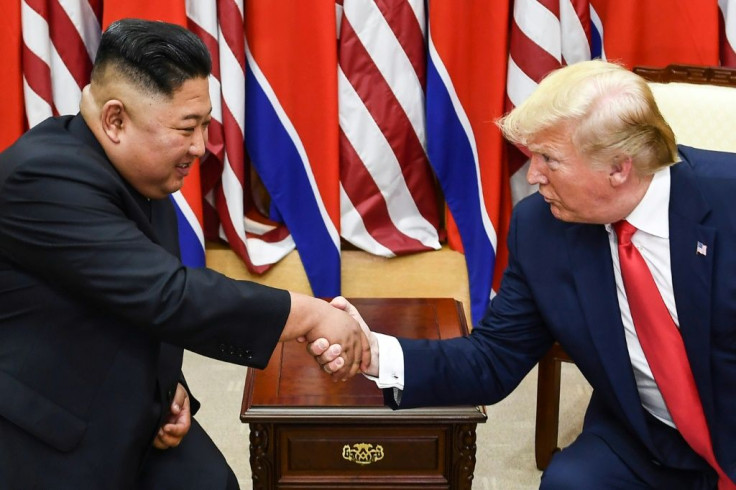US Ready For North Korea's Missile 'Christmas Gift', But Prefers Dialogue

North Korean Leader Kim Jong Un has already sent President Donald Trump a “Thanksgiving message”, when he tested a super-large multiple launch rocket system on Nov. 28. The question now is: Will he send a “Christmas gift”?
Barring any diplomatic progress, North Korea seems certain to conduct another test probably on an updated version of a long-range missile, or ICBM, that has the potential to strike the U.S. homeland with a nuclear weapon.
Kim has made it very clear that he is seeking some relief from economic sanctions imposed by Washington and is willing to take a “new path” to get what he wants. Washington’s choice is to stay on the diplomatic trail but is prepared to react to any crisis created by Pyongyang.
Aside from the actual creation of a nuclear device, the biggest roadblock for any “pre-nuclear” nation is how to deliver the weapon to long-range targets. Any delivery system must shield the device from the heat and stress of re-entry to be deployed over the target. Some experts think that the recent tests by North Korea were designed to test a re-entry vehicle, the last piece for their nuclear puzzle.
Harry J. Kazianis is director of Korean Studies at the Center for the National Interest that was created in 1994 by former President Richard Nixon to “serve as a voice for strategic realism in U.S. foreign policy.”
Kazianis asked multiple senior White House officials about the North Korean situation and concluded that the Trump administration is ready for the worst but remains hopeful another nuclear standoff can be avoided.
One senior official commented, “We have, and will remain, always open to dialogue with the Democratic People's Republic of Korea (DPRK). The door is open for talks and we are ready to be very flexible in finding an agreement that works for all sides. But if North Korea does decide to test a fully operational ICBM in some sort of effort to test our resolve, they won’t like our reaction and, we will respond.”
When asked for details by Kazianis, the official offered no specifics as to the response except to say that the intensity of any campaign against North Korea would be tougher than late 2017 when Pyongyang boasted about reaching U.S. soil with nuclear-tipped intercontinental ballistic missiles. The new Trump administration reacted by threatening a military strike.
The official said that additional sanctions would be part of a larger campaign. He said, “President Trump would feel insulted if Kim tried to not only make him look foolish but break a personal pledge that North Korea would halt these sorts of missile tests. The president looks at such actions as an attempt to hurt his reelection chances and he does not take kindly to such a threat.”
Another White House official said, “North Korea has a choice to work with us to find a solution without some sort of pressure tactics of a time limit or not. There is a solution here but testing missiles or a nuclear weapon will only take a us a longer time to get there.”
He continued, “We stand ready to talk. We stand ready to find a compromise. But we can’t do it all on our own. We need a partner in Pyongyang who will work with us. But if North Korea decides to return to the days of long-range missile and nuclear tests, we will have no choice but to react.”
Any non-military move by Washington would have the purpose of depriving Kim of billions of dollars that he needs to build more nuclear weapons and continue to rule his country. If he rejects the existing “path” of negotiation and diplomacy, the added stress could break an already floundering economy.
© Copyright IBTimes 2025. All rights reserved.





















